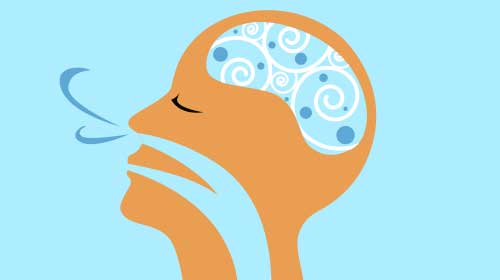
By: William Valdes
Have you ever been in a situation where you were overwhelmed, stressed, and had no idea what to do? A kind of state of mind that feels like Best Buy on Black Friday and there is only one of everything – pure chaos. When presented with such times of hardship and uncertainty sometimes the best action we can do is step back and:
breath.
Why is it that when we are in an anxious state, the simple yet powerful act of breathing can counteract this innate primordial act of stressing. Today I will briefly talk about how and why breathing is practically Dr.Jekyll and Mr. Hyde of our anatomical and psychological wiring.
The Nervous system and breathing
The way we breathe gives us an opportunity to identify the connection between mind and body. Our breath is a window into our brain or subset called the autonomic nervous system (ANS) which is split into two distinct groups; sympathetic and parasympathetic nervous systems.
The sympathetic nervous system (rapid respiratory rate) :
This is our fight or flight response. This has been programmed into humans since the times of hunting and gathering. The good news is this kept us alive for many years i.e. getting chased by a saber tooth tiger. The bad news is our body does not know the difference between life or death situation or how you will feel right before giving a speech. Stress is Stress.
Inhalation:
As we breathe in, we are bringing vital oxygen into our systems that need to be circulated throughout our bodies. Circulation is governed by an increase in the heart rate in which equals the sympathetic nervous system. From a neurological perspective, inhalation is governed by the sympathetic nervous system because as your body’s heart rate speeds up, your body needs to bring in oxygen to the systems overworking.
The parasympathetic nervous system (slower respiratory rate)
This, on the other hand, is our “rest and digest”.
Exhalation:
Now, let’s think about the opposite: exhalation. Oxygen has been moved throughout our systems, making its way to tissues and diffusing. Diffusing is caused via the complex interactions of gases in the blood into said tissues. From there, we are left with a decreased demand for our blood to circulate and a decreased demand for our heart rates to be high. So, reflexively, the parasympathetic system takes the wheel for the duration of the exhalation process.
Okay, so we went a bit deep on this one but I wanted to lay a bit of foundation for what’s in store. Breathing is vital not just for living but also for psychological well-being and anatomical build to name a few. We will continue this series with some exercises and also how more sporadic/sympathetic breathing patterns can influence muscles of the body. Also, I will teach you how to mitigate this as effectively as possible with zero equipment. Please share and comment below some of your approaches for reducing stress!!